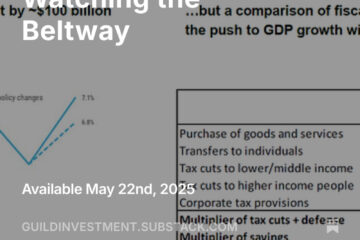Bond Funds: A Bigger Risk Than You Think?
Investors are so used to trading ETFs that they seldom ask themselves questions about how those ETFs are constructed. In the event of major market disruptions, though, that could prove problematic — with potentially troublesome consequences for investors.
A share of an ETF is a slice of the fund’s holdings. Those holdings are constructed to give you exposure to a market, a sector, or a theme — and they could be just about any security. Commonly, those holdings are stocks or bonds. The actual securities owned by the fund are called the underlying securities.
Since shares in the ETF trade in an open market, they can fluctuate above or below the value of the underlying securities. Perhaps you’ve watched the price of an ETF that tracks a foreign market — Germany, for example. You know that the German market closed up 1.2 percent — and yet your ETF is not reflecting that rise. But by the end of the trading day, it usually is. How does this happen?
When there’s a disconnect between the ETF and the underlying securities, big institutional buyers and sellers — “authorized participants” — come in to arbitrage the difference. When they spot a discrepancy, they can either buy a big block of the underlying securities and exchange them for newly minted ETF shares — or they can redeem ETF shares to get the underlying in exchange. This process works well, usually maintaining a close correspondence between the price movements of the ETF shares and the price movement of the underlying securities — especially for funds tracking the big indices.
The problem is that the system only works well when the underlying securities are sufficiently liquid. If they’re not, the arbitrage can’t happen as easily or effectively — and it is conceivable that a fund’s shares could trade at a significant discount to the underlying securities, especially during a panic.

With Funds Holding More Bonds, Could There Be Liquidity Risks In Some Markets? Source: Pension and Investments
Regulators are becoming concerned that this could be a problem especially for ETFs and mutual funds holding bonds — particularly corporate and foreign bonds where the primary market is thinly traded. The holders of ETF shares have come to believe that their investment is liquid — but the problem may be that in a crisis, liquidity in the market for the underlying securities could dry up very fast.
Also, many large financial institutions — that is, the “authorized participants” — are facing considerably tighter risk standards in the post-2008 world — which makes them wary of holding large inventories of some kinds of bonds. This contributes to the overall picture of potentially poor liquidity underlying some bond ETFs. Panicked selling of the ETF shares during a crisis could result primary participants exchanging them for bonds from the underlying portfolio — and then immediately selling them, presenting the specter of a downward cascade resembling a short squeeze.
Investment implications: We do not know when the next crisis is coming, but we believe that a prudent investor in bond ETFs or mutual funds would do well to know something about the liquidity of the actual securities underlying their fund shares. Particularly, bond markets are not as liquid and not as transparent as stock markets, and it is possible that funds with exposure to illiquid bonds — or bonds that become illiquid during a crisis — could prove a greater risk to investors than they currently believe. In addition, Guild Investment Management is bearish on bonds. We believe interest rates will rise, and that bonds will be very unprofitable to own.

